Insights
The Requisite
Organization - Part 1
Old-fashioned or timeless?
First of 3 parts on the methodology that inspired the creation of the STR Suite.
Requisite organisation (RO) is a term and methodology developed by Elliott Jaques as a result of the research into the stratified systems theory, general theory of bureaucracy, work complexity and human capability over 60 years. Dr. Jaques incorporated his findings during ‘Glacier investigations’ into what was first known as ‘Stratified Systems Theory’ of ‘Requisite Organisation’. This major discovery served as a link between social theory and theory of organisations. Requisite Organisation is the system of business organisation that aims for effective managerial organisation and leadership, based on the systematic application of scientific research about the nature of work and the nature of individual's capacity for work.
This methodology uncovers dysfunctional alignments between systems, structures, staff and strategic intent and vision, and then realigns them to fit the required complexity of the business with the purpose of ensuring the viability of the company and long-term sustainable growth of its economic value.
In simple terms, it proposes structuring the business by focus:
- Operational excellence - running the business
- Integrating new businesses - changing the business
- Creating space for innovation - disrupting the business
MOST POPULAR INSIGHTS
Optimal number of layers and well-defined matrix relations
This can be formulated as placing the right person, at the right place and at the right time. Right person means understanding the working capability of every employee and appreciating their development potential; right place means building a structure with solid foundations, agile and immune to VUCA threats, where every single person has a sense of purpose; right time means creating a system to ensure the sustainability of the organization’s development over time (sound succession planning).
RO is therefore not about benchmark, it is about judgement, coherence and continuous value creation. The RO framework can be applied across all aspects of management functions - hierarchical layers and matrix relations, definition of roles, their accountabilities and resources, managerial excellence and leadership, assessment and succession planning and finally, fair pay and compensation systems.
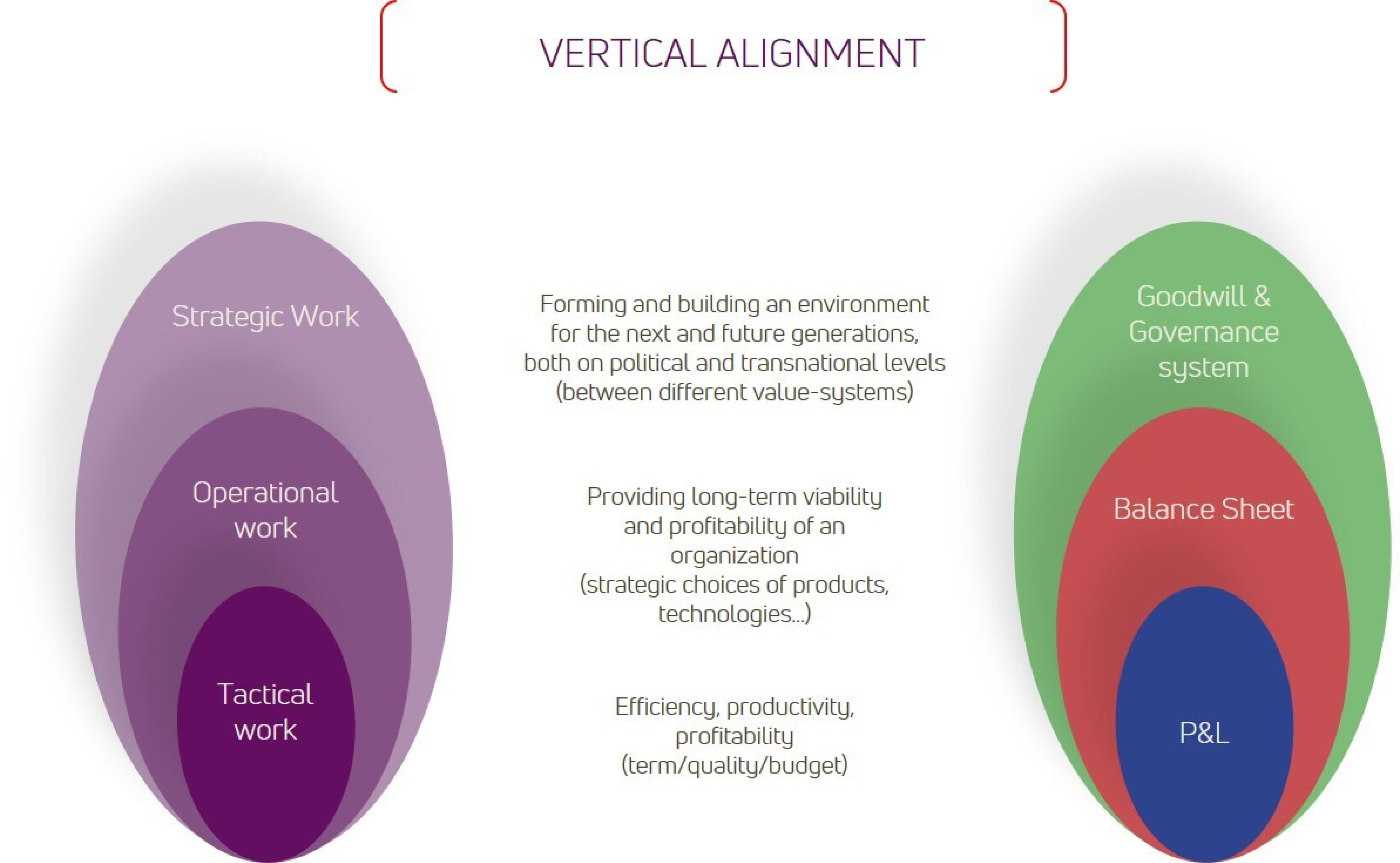

The Stratified Systems Theory categorises work by essence and nature to enable strategic focus and analyses work complexity and identifies, on the same scale, the working capabilities needed to perform any role in the organisation.
Horizontal Alignment and Matrix Relationships - One of the most challenging aspects of management
Horizontal alignment is a critical aspect of good governance in a company and is linked to cross-functional relationships. These are ostensibly one of the most difficult aspects of managing a company. Since the Matrix Organization has been created with very specific rules (GE), it has been copied often but not very successfully, due to a hurried implementation with little focus on their interactions.
In this sense, Eliott Jaques introduces the concept of working relationship. This concept enables the clarification of how processes should link different types of functional work in an organisation.
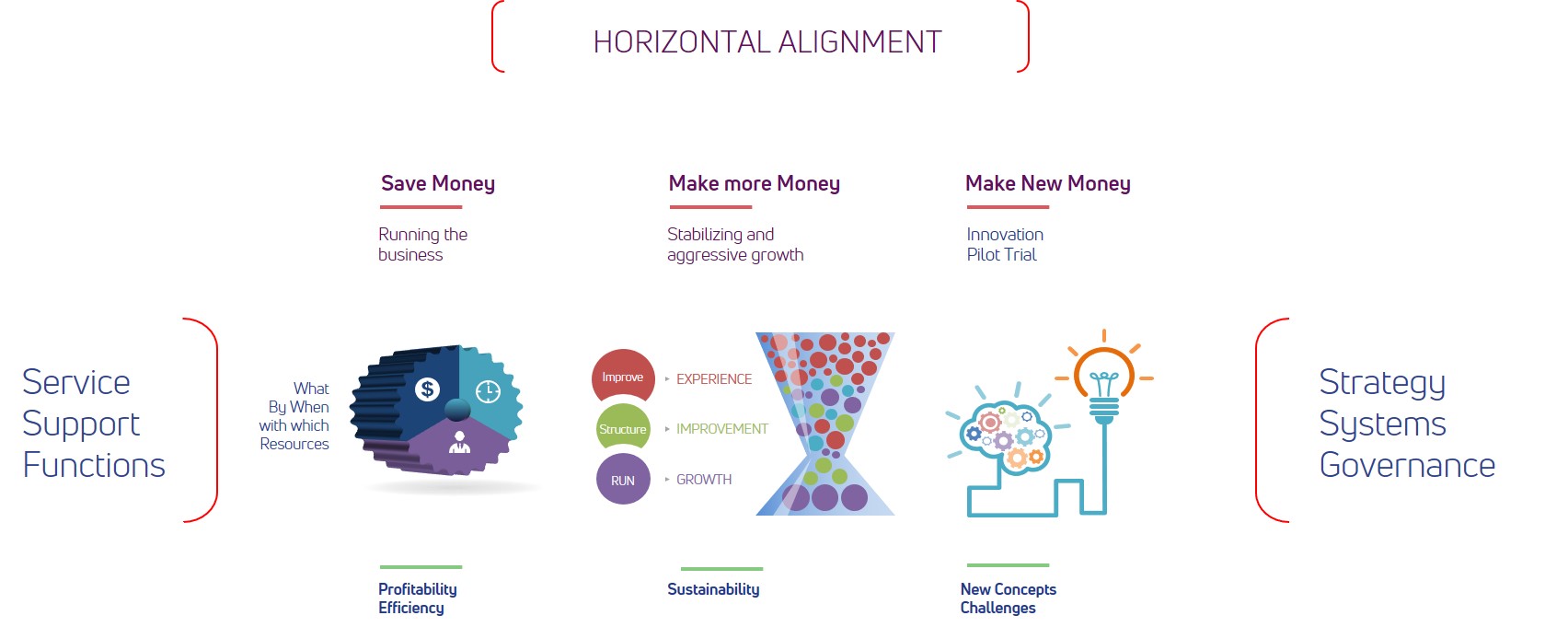
Whenever we talk about running, changing and disrupting roles in an organization, we also introeduce roles that enable these activities to exist. These enablers are, from one side, support functions and from the other, governance functions (governance, strategy, ideology and culture).
This is the essence of properly defined matrix relations. (Who Does What).
The methodology identified 7 matrix relationships, and only 7; those 7 relationships are sufficient to describe any working process in the organization.
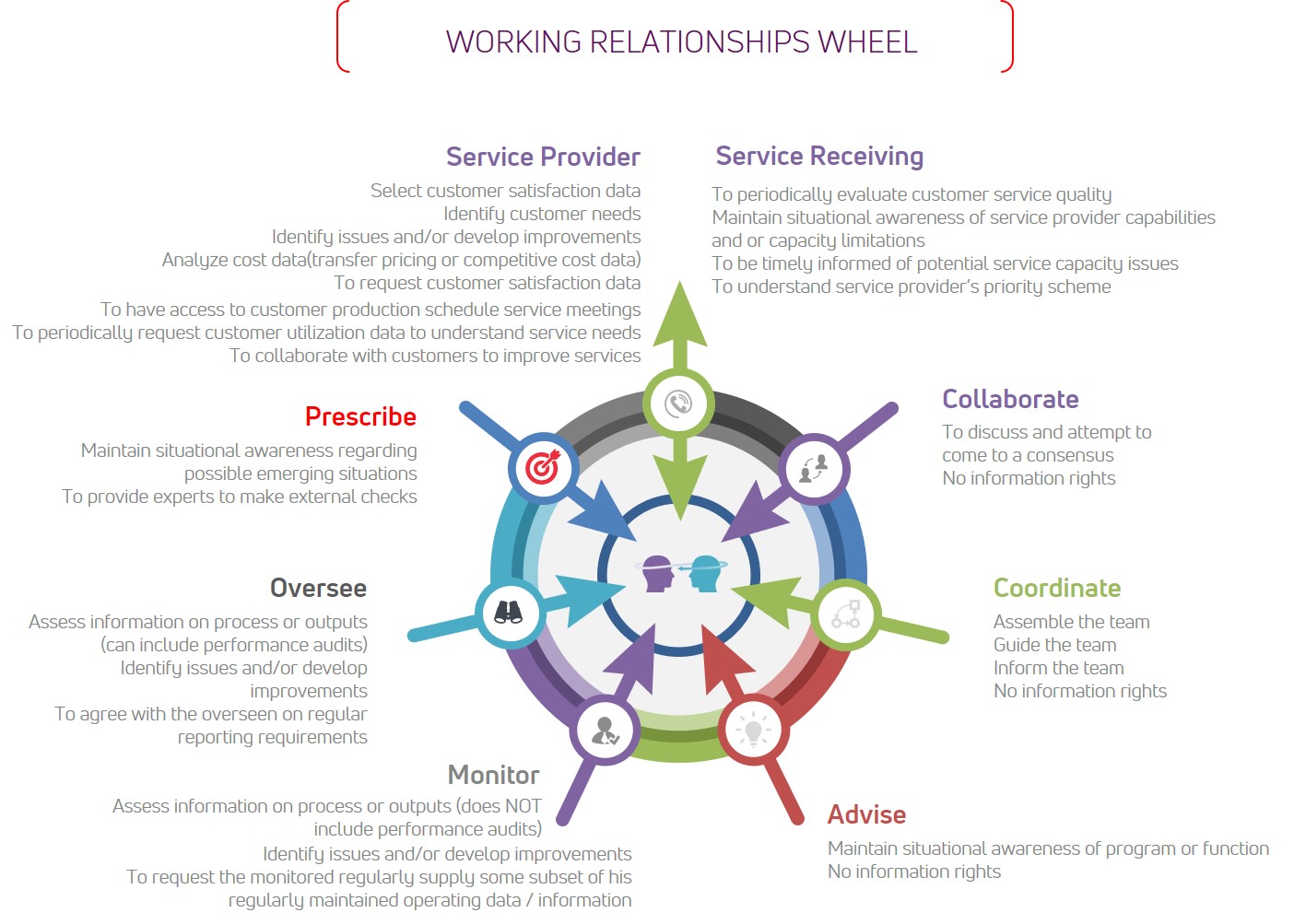
Flow - How great work gets done
Finally, any organization is a living organism that permanently evolves and changes, and it always needs to keep a good level of balance in order to grow in harmony and in its context.
This is the logic behind the idea of “Flow”, or the optimal state for work to be done. An employee in flow is one whose capabilities match the degree of complexity of the work. Flow is therefore not absence of pressure or relaxation, but rather the result of this match, or “capability connecting”. This applies also to any subpart of the organization and the company as a whole.
In the context illustrated below, “rigid” and “diffuse” apply to how key aspects of the cycle of any task (further explained under point 03) are handled. By rigid we understand a task management system where management has little confidence in the workers, offers no autonomy, is based on “command & control” and micro-management. Conversely, a diffuse environment suffers from the opposite, where there is too much trust, little control and lack of clarity. Rigidity provokes fear, anxiety and unwillingness to innovate or take risks, whereas diffusion leaves an impression of lack of direction and sense of purpose. The organizational consequences of both management environments.
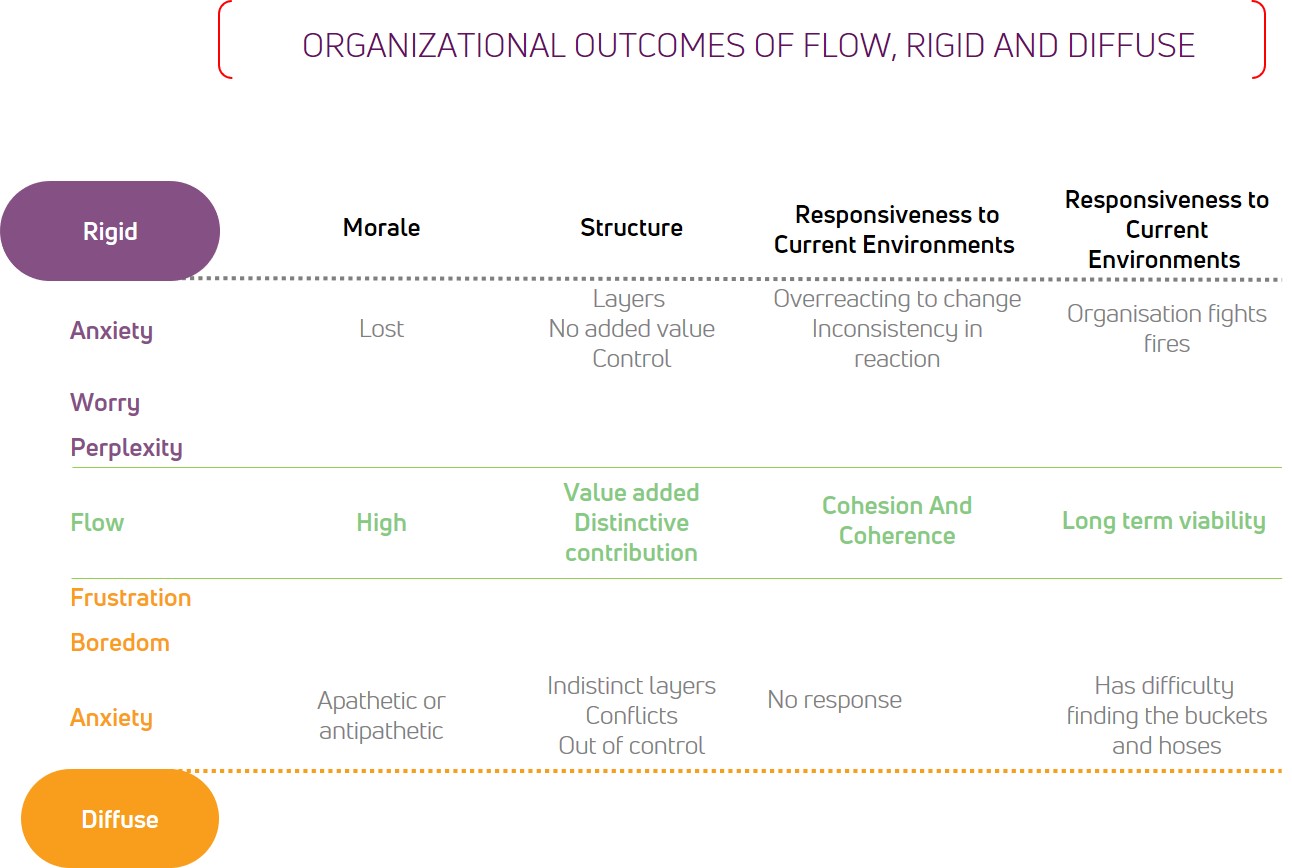
The result at the highest level of granulation shows the following engagement for the employee:
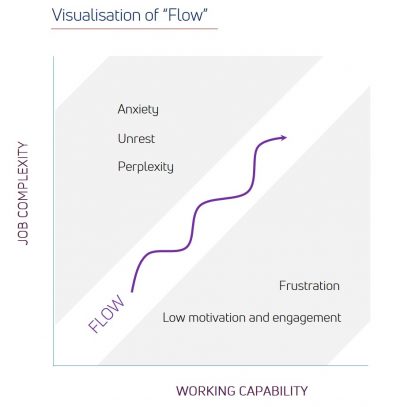
To be continued...
